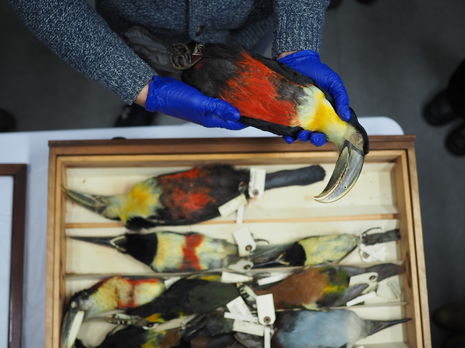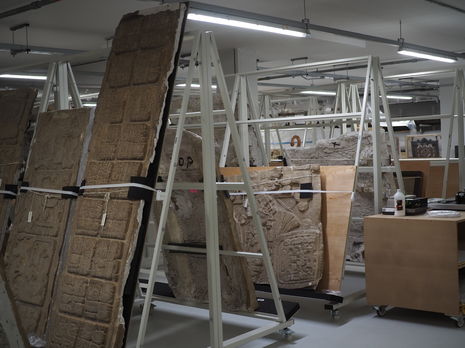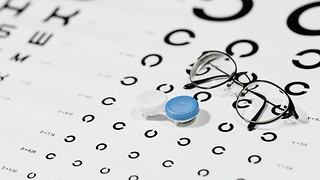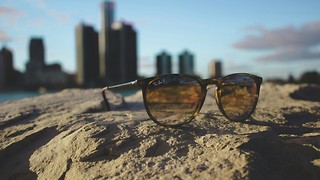‘We’re not just storage’: inside Cambridge’s museum collections
Jonathan Liu takes a peek behind the scenes of Cambridge’s museums to explore their hidden collections

“So, what do you think is in the body bag?” I am in the basement of Cambridge’s Polar Museum with Laura Ibbett, the collections coordinator at the Scott Polar Research Institute. Around me is the museum’s store, a miscellany of objects accumulated over a century of polar exploration and scientific research. There are goggles used on Ernest Shackleton’s Antarctic expeditions, Inuit sealskin anoraks and hiding within the white plastic body bag, the spread-eagled skin of a Polar Bear named Moses.
The Polar Museum is just one of eight museums affiliated with the University of Cambridge. Collectively, they hold more than five million pieces of art, artefacts, and other specimens, but of these, a significant proportion are not on display. Instead, much of this vast collection lies behind the scenes in museum collections under careful supervision.
Conservation work is one important role that these collections play. With many objects made up of organic material, pest infestations are an ever-present threat. “It’s probably what we fear the most in relation to these collections,” admits Lucie Carreau, Collections Team Coordinator at the Museum of Archaeology and Anthropology (MAA). In the case of the Museum of Zoology’s Bird Room, up until last year, 100,000 naphthalene moth balls weighing a total of 25kg were in use, keeping pests at bay. Nowadays, rather than using chemicals that risk unintentionally damaging objects and harming human health, systems of temperature control, air locks, freezing of items and continual visual monitoring are preferred.
“A team of nine collections assistants painstakingly documented and photographed roughly 317,000 separate objects”
However, the same checkpoints and barriers erected to keep objects safe from damage can also serve as blocks to access by people. Unlike the newly opened V&A East Storehouse, none of Cambridge’s collections have been designed as ‘open storage’ with complete public access. The collection for the Sedgwick Museum of Geology uses this relative inaccessibility to its advantage. Whereas the main museum site, located amidst the hustle and bustle of Downing Street, can be a difficult place for children with special educational needs to visit, the quieter and less trafficked museum store on Madingley Rise is better able to host them away from crowds of people and noise.
Nevertheless, there is an overall move amongst museum collections towards increasing their accessibility. “There’s the thought that things behind the scenes in museums are meant to be hidden, but that is not the intention,” says Lucie Carreau. “The objects are still there for people to see and interact with, it’s just hard to do that with walls that aren’t see-through.” To overcome this, museum collections are opening up their collections through digitisation projects. The move of the MAA’s collection from a site in West Cambridge to one in the Cambridge nuclear bunker has provided a unique opportunity for the museum to fully catalogue its entire collection, uncover the history of the objects, and make this information available to the public online.
In a process that took over five years, a team of nine collections assistants painstakingly documented and photographed roughly 317,000 separate objects that lay in the MAA’s storage, over 100,000 more than what they had anticipated. “There were many, many objects that were rediscovered as part of this,” says Lucie Carreau. “To bring these objects back into the museum and restore their identity, that was always a nice moment for us.”
“None of the people who collected these specimens hundreds of years ago could even imagine the work people are doing on them today”
Part of this process of restoring identity to objects increasingly involves engaging with the colonial legacies of museum collections. “We’ve had a few projects where we’ve reached out to communities [associated with objects] to try and work with them and build that relationship,” explains Laura Ibbett. One Russian Arctic community worked with the Polar Museum to change how they stored some items in their collection, advising them to place some coins alongside them as a “form of offering” of respect rather than treating them as mere objects in boxes. Ultimately, for Laura, “unless you speak to the people that created it and then hear their story, you don’t understand it properly”.

This unearthing of narratives from items in the collection is what Laura Ibbett finds to be the most satisfying and meaningful part of her job. “Once you delve into all of the objects, you start to see how they’re all connected,” she says. “It’s great to keep hold of this stuff, but it needs to ultimately feed in some kind of way so that you can say why it’s here and why it’s important; we’re not just storage, we are part of a museum.”
The idea that museum collections are dynamic and not merely a place for items to sit in deep storage was something I felt throughout my visits. It was perhaps most evident in the Zoology Museum’s Bird Room, surrounded by the vibrant plumage of long-dead tropical birds with poetic-sounding names like the Pompadour cotinga and Golden-tailed sapphire. “None of the people who collected these specimens hundreds of years ago could even imagine the work people are doing on them today,” says Professor Daniel Field, the Strickland Curator of Ornithology. He offers one example of how a researcher used the deposition of soot in the feathers of specimens to track historical patterns of industrialisation and pollution in America. “People don’t really understand how permanently important these places still are for research.”
Towards the end of my tour of the collection, Daniel Field holds up the body of a Kinglet calyptura, a delicate green bird bedecked with a crimson crown of feathers. Though once a common sight around Rio de Janeiro, it is now thought to be extinct. Only 100 or so specimens now exist, scattered throughout museum collections worldwide. Even if all that museum collections were good for was deep storage, in preserving such beauty, I can’t help but feel it would still all be worth it.
 News / SU reluctantly registers controversial women’s soc18 December 2025
News / SU reluctantly registers controversial women’s soc18 December 2025 Features / Should I stay or should I go? Cambridge students and alumni reflect on how their memories stay with them15 December 2025
Features / Should I stay or should I go? Cambridge students and alumni reflect on how their memories stay with them15 December 2025 News / Dons warn PM about Vet School closure16 December 2025
News / Dons warn PM about Vet School closure16 December 2025 News / Cambridge study finds students learn better with notes than AI13 December 2025
News / Cambridge study finds students learn better with notes than AI13 December 2025 Fashion / The art of the formal outfit 18 December 2025
Fashion / The art of the formal outfit 18 December 2025









